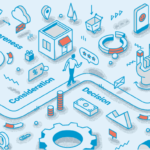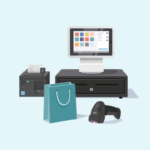You can’t please everyone. That old saying is especially true in today’s hyper-competitive retail market. Instead of trying to offer something for everyone, retailers are discovering that narrowing their niche is a path to increased sales and profitable growth. Even though it can feel counter-intuitive, targeting a smaller set of customers can enhance customer service, create efficiencies, and save costs. All it takes is practicing a little retail nichecraft.
So, what’s a niche? A niche is a defined segment of potential customers whose needs can be met by a retailer’s products and services. Establishing a niche requires retailers to focus on specific areas of expertise and specialization. By identifying, understanding, and serving a well-defined niche, retailers can create a distinct competitive advantage – and ultimately attract more customers. Often, when retailers build their brand through showcasing their expertise within a niche, they become less reliant on price and promotions to drive growth. In fact, research shows that personalizing a customer’s shopping experience, along with the product and services offered, can lead to revenue increases of 5 to 15 percent.
What’s your value?
Start by articulating the purpose of your retail business. But remember, customers buy for their reasons, not yours. Answer the following questions from your best customers’ point of view – or better yet, ask some of them how they would answer.
- What problem does your store solve for customers?
- What needs do you help them meet?
- What wishes do your products and shopping experiences fulfill?
When refining the answers to these questions, don’t just describe what you do or how you do it. (“We sell quilting supplies in-store and online.”) Rather, define what your retail business helps customers achieve. (“We help people create one-of-a-kind quilts by providing everything they need, from supplies and tools, through inspiration, support, advice, and even classes to develop new skills and techniques.”)
Who is (and isn’t) part of your target segment?
When you know the value your business delivers for customers, it’s time to define exactly who your target customers are – the more precisely, the better. As a first step, tap into the customer reporting data from your point-of-sale (POS) system to discover the attributes your best customers have in common. Supplement a “top customer” report with demographic and geographic data points that you’re capturing within your POS system’s customer profiles. Chances are, you’ll see patterns in terms of gender and age ranges. For physical store locations, you will also gain insights into the geographic areas that your best customers are coming from. Use the data to help you begin to answer the following questions:
- What’s the age range of our ideal customer?
- What’s their gender?
- What’s their marital status? Life stage?
- What’s their occupation? Income range?
- Where do they live?
As you mine your POS data, it’s just as important to identify customers who are outliers from the primary customer segments you find in the data. While they may just be one-offs, these outliers could also represent a potential new segment to target. Most retailers target between three and five distinct customer segments.
Once you have some basic demographics, begin to fill in psychographic details about each segment. Psychographic attributes include interests, attitudes, and values that help drive your target customers’ purchase decisions. Capturing this type of information is part art and part science. Build questions into the customer profile feature within your POS system, and look for additional opportunities to survey your top customers to better understand their motivations, challenges, and hobbies. For example, a clothing boutique may ask top customers to choose a style icon from a set of choices, or a hobby retailer can add profile questions that drill down into how much time a customer devotes to their hobby.
Related: How Smart Retailers Build Ideal Customer Profiles that Drive Sales
Is your niche big enough?
Once you have a clear idea of who your target customers are and what makes them buy, it’s important to do some due diligence to ensure your niche is big enough to generate the sales you need. Leverage market data available through the U.S. Census, Chamber of Commerce, or industry-specific sources to factor in population size, geographic growth rates, and consumer trends.
If you find your niche is too narrow, use the market data to help determine how to broaden it. But be careful not to make a segment profile too general that it loses its defining characteristics. Instead, you may want to identify an additional but separate target segment. In the end, having a well-defined niche enables you to personalize your offering and experience. The more targeted your offer, the better it will resonate with your ideal customers. As an example, a liquor retailer may build target segments for wine connoisseurs and another for customers who favor specialty cocktails. Then, from promotions and events through in-store and online shopping experiences, offers can be tailored to appeal to each group.
Related: POS Data: The Power to Personalize
Look to POSIM – a point-of-sale and inventory management system – to help you capture and optimize the data you need to succeed and grow. Learn more about what POSIM can do for your retail business, and contact us for a demo today.












